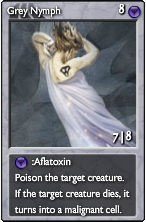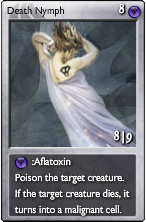13
Off-Topic Discussions / Re: Science!
« on: September 11, 2010, 12:52:25 am »So I noticed there was a religion board, but no science board. This thread is for all your science discussions. Some topic starters:I don't understand the bit about 'How can darkness be the absence of light'. It just is- that's pretty much the definition. And a place can be truly dark if there's no way for light to reach it- an opaque container for example. And of course, light interacts with pretty much everything it hits, which is why you can't see a candle from 10 miles away- it's also the reason for orange sunsets and blue skys.
Light!
I am very fascinated by light. How can darkness be the absence of light? If light can reflect and it moves at the speed of light, how can anywhere truly be "dark"? Shouldn't light flood everywhere? Right now, as I type this, the sun is going down where I live, so it's behind my neighbors house. The only other source of light inside this room is my laptop. And yet, I can clearly see my blue carpet. Which begs the question: Has light somehow managed to bounce around at four convoluted angles so that I might see the carpet? And if it's able to do that, why can't the light reflect into, say... the dark room next to me. And, if darkness is truly the absence of light, then how can shades of darkness exist? Is light more like a swiss cheese slice, with random pockets of darkness strewn inside? And what makes light unable to go there while it could go elsewhere? If these random swiss cheese holes exist, why aren't the isolatable? And even if they're just fluctuating rapidly, light travels at, well, the speed up light! You'd think it'd fill up all the space... Also: you can't travel faster than light?! Why the heck not I say! No one's ever tried it...
Light will reflect off anything except completely black surfaces, so yes it does bounce around a bit. Anywhere which gets no light is in shade. You can see the blue floor because, I imagine, there is a direct path from your screen to the floor, and possibly due to light being reflected off the walls and then onto the floor.
I don't know why the light can't reflect into the room next to you, not knowing the house plan. Probably because the door is shut. If you can see into the room then obviously the light *has* reflected into the room. But remember, as light hits things, coloured things certain wavelengths are absorbed. Although it's not technically correct I guess it could just be used up.
Shades of darkness are just levels of light. If there's not much light then it's relatively dark.
Basically the main reason light isn't everywhere is because it hits thing. And the light in the visual spectrum can't move past a lot of the things it hits, so it stops. That's about it. As far as I know- it's been a while since A level physics





 Guest Posts
Guest Posts



 heavy isn't it?
heavy isn't it?